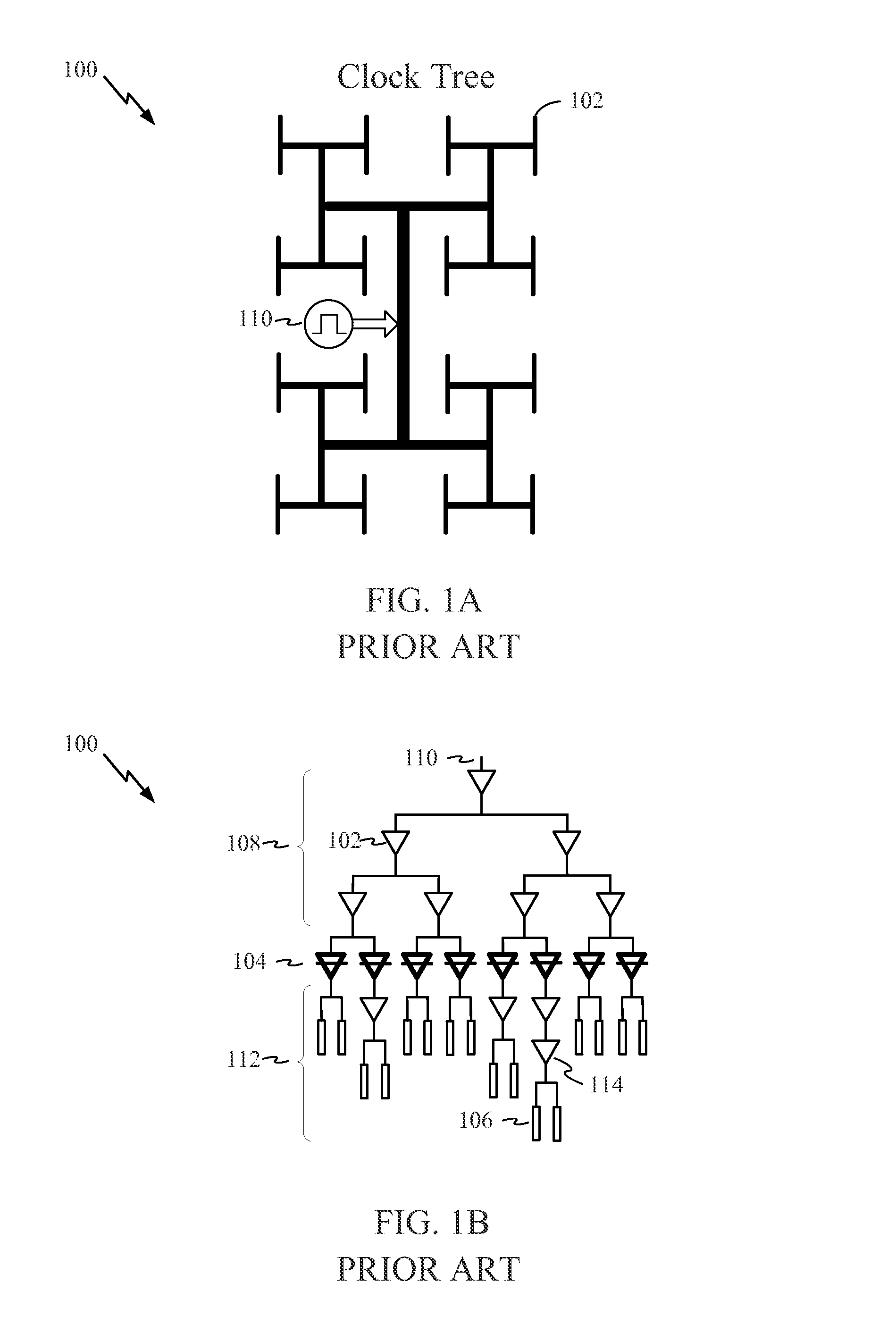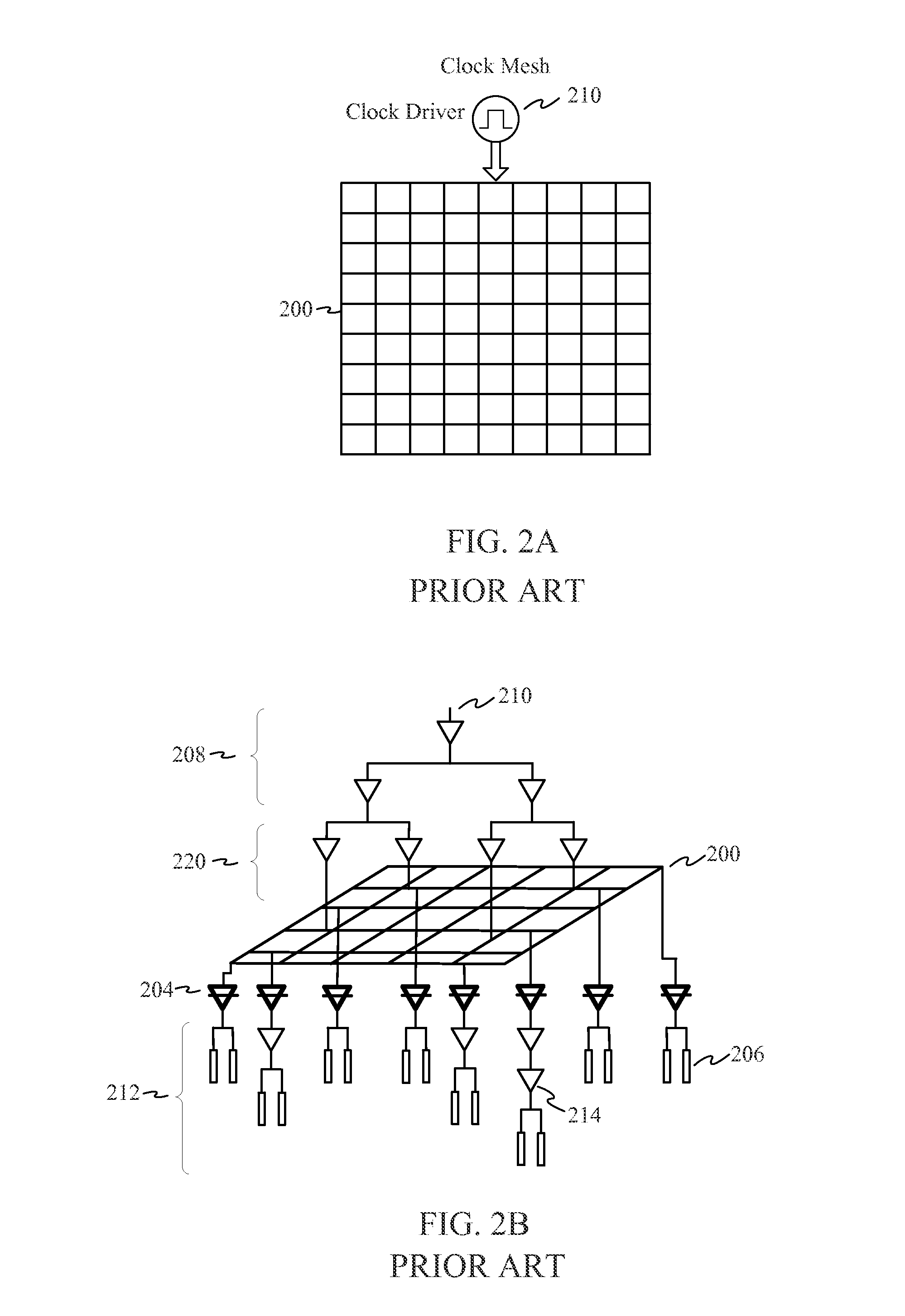Clock distribution using MTJ sensing
a clock distribution and mtj technology, applied in the direction of generating/distributing signals, pulse techniques, instruments, etc., can solve the problems of increasing routing overhead, inability to maintain the uniformity of branches in an h-tree structure b>100/b>, and significant power consumption of clock distribution networks
- Summary
- Abstract
- Description
- Claims
- Application Information
AI Technical Summary
Benefits of technology
Problems solved by technology
Method used
Image
Examples
Embodiment Construction
[0028]According to aspects of the present disclosure, clock signals are distributed to clocked circuits, such as logic gates on a chip, by applying an oscillating magnetic field to at least portions of the chip. Clock generation circuitry is coupled to one or more of the clocked circuits. The clock generation circuitry may be located proximately with clocked circuits on the chip to reduce clock skew. In one aspect, the clock generation circuitry includes one or more magnetic field sensing devices, such as magnetic tunnel junctions (MTJs). The clock generation circuitry is configured to generate a local clock signal in response to the oscillating magnetic field. This eliminates the need for a conventional clock distribution network and thereby reduces skew and power consumption related to the conventional clock distribution network.
[0029]Referring to FIG. 3, a clock distribution apparatus 300 according to aspects of the present disclosure includes a number of clock generation circuit...
PUM
 Login to View More
Login to View More Abstract
Description
Claims
Application Information
 Login to View More
Login to View More - R&D
- Intellectual Property
- Life Sciences
- Materials
- Tech Scout
- Unparalleled Data Quality
- Higher Quality Content
- 60% Fewer Hallucinations
Browse by: Latest US Patents, China's latest patents, Technical Efficacy Thesaurus, Application Domain, Technology Topic, Popular Technical Reports.
© 2025 PatSnap. All rights reserved.Legal|Privacy policy|Modern Slavery Act Transparency Statement|Sitemap|About US| Contact US: help@patsnap.com



